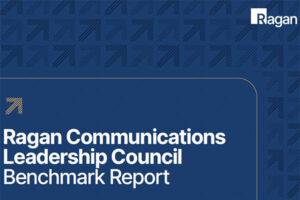3 tips to turn DE&I data into thoughtful initatives
Thoughtful initiatives help shape workplace culture — something that industry peers, job candidates, and employees all take seriously.

Sara Axelbaum is the global head of inclusion and diversity at MiQ.
Companies have long offered perks to try and attract talent and retain their employees. Free coffee and midday ping pong matches will only go so far, though. DE&I initiatives are the new cornerstones of successful organizations – in fact, According to Deloitte, employees’ engagement can increase by as much as 20% when they trust their employer’s commitments, and the likelihood they leave shrinks by a whopping 87%.
Boards play a critical role in embracing DE&I – not just as a moral imperative, but as a vital component of long-term success. Developing a comprehensive understanding of your organization’s current state and progress over time through data collection and diligent analysis is key to maturing DE&I initiatives in the right direction.
Too many organizations look simplistically at data and set out to achieve the bare minimum, expecting to find answers in their data sets that only help meet compliance requirements. Forward-thinking organizations, on the other hand, are invested in collecting data beyond the basics of gender, race, and ethnicity to tell a more comprehensive story about their workforce – and actually do something with the findings. Here’s how you can take an integrated approach to data collection and analysis to create better outcomes for your DE&I initiatives.
Understand your true story
Demographic data is only the starting point. Quantifying the representation of different groups is important, but it only portrays a moment in time and doesn’t show if progress is being made, nor isn’t informative to projecting long-term outcomes. This is why collecting and analyzing hiring data is an important contextual element to add to the mix. Adding retention data, for example, provides more depth for your organization’s story and (hopefully) shows that when you put efforts into hiring people from different backgrounds, they remain and don’t go through a revolving door.
For example, MiQ’s largest office is in India. Its global data shows it is very racially diverse, but that doesn’t tell the complete story. MiQ goes a step deeper than the EEOC categories of race and ethnicity because it doesn’t feel that larger categorizations like “Asian” offer the necessary nuance of measuring the experiences of its East Asian employees as a different cohort than its Indian employees.
Share results.
It may go against a board’s mindset to divulge the data and story that gets unearthed, but it’s necessary in order to make progress. We don’t create the fair and equitable workforce we strive for if we keep stories under wraps.
Share both successes and challenges. Of course you should celebrate the achievements of your organization’s DE&I initiatives, but it’s equally important to acknowledge areas where you have fallen short or experienced setbacks. This transparency fosters trust with current and future employees, encourages a growth mindset, and presents the opportunity to fix what isn’t working. It may not happen overnight, but by having the information in the open and creating a plan to actively solve issues, you buy yourself time and goodwill to improve them.
Sharing also creates industry benchmarks and allows other organizations to grow as a collective. Uniting with industry partners in these efforts doesn’t mean revealing your company’s secret sauce. It shows leadership to offer your strategy and resources to others, who can tinker with your blueprint to make one for themselves. If we unite in our resources, we can all spend less and do more.
Keep it going.
Data collected over time will show trends, which can tell you where to look deeper and where to ask more questions. Don’t be afraid of opening up Pandora’s box. Just because you don’t look inside, doesn’t mean those problems don’t exist. A genuine curiosity and willingness to solve them shows a proactive approach that is more likely to elicit a positive outcome.
By integrating data collection and analysis, boards can empower their organizations to create and implement effective DE&I initiatives. Using the data to drive insights gears you toward long-term success.
If you understand where your business stands and where you want it to go, are transparent about the changes you’re making, and continue those efforts, you have far more than just a more equitable workforce. You’ve created a culture where people want to be, and stay at.






